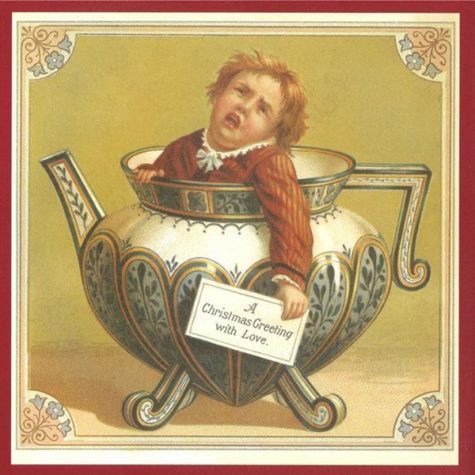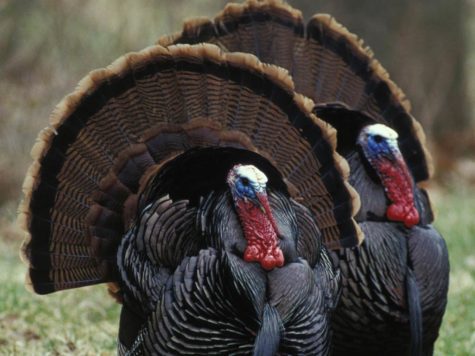It’s True
So, my grandiose scheme for an awesome website is gradually coming true. Only problem is that it’s not free. Not only that – it just got even more expensive due to bandwidth issues. So, maybe at some point I’ll try a “Go Fund Me” to pay for the web hosting.
Right now, though, I’m working on a new shop at Red Bubble. They pay better than Cafe Press, and if I can just make enough sales, it would really help to pay for this awesome and amazingly ambitious website. I think the stuff I have made so far is pretty freaking cool…
So if you’d like to support my endeavors, just visit my new RedBubble shop: Magick Mama, and even if you don’t buy anything, at least you can like or share the designs that you think are cool. The more visitors I have, and the more likes I have, the easier it is for people to find my designs – and then, theoretically, stuff will sell and money will pile up in my paypal account!
The testimony and investigation into the death of Addison Williams, dated 18 January 1873, can be found in the Bedford County Coroners’ Inquisitions, 1813-1899. The collection is open for research and available at the Library of Virginia.
On 25 December 1872 in Bedford County, VA, Williams paid a visit to the home of Cornelia and Charles Abram. He arrived “about light” and was given a dram of whiskey by William Ogden. Ogden then made a gallon of eggnog, and Williams “drank a glass and repeated several times.” Everyone present “drank eggnog freely,” but Williams enjoyed it most of all, drinking more than the rest of the party.
He “left the house and threw up,” only to come back and take another drink. Afterwards, Williams “left in a run, as in a prank,” never to be seen again. Williams “had commenced showing he was under the influence of liquor,” but no one at the party thought him too drunk to make it home. As one party goer put it, “…as I thought he was going so well it was useless for me to go with him.”
Unfortunately, Williams could have used a little assistance. He was found on Christmas morning “dead and frozen” mere yards from his house. The resulting coroner’s inquisition determined Williams came to his death as a result of “being exposed to the cold after drinking a large quantity of mean whiskey.”
Source: Appalachian History

This so totally illustrates me!
Don’t be fooled by their reputation for being thoughtless. These roly-poly birds have a few tricks up their wings.
- They Can Fly
They’re not too bad at it, either. A wild turkey (Meleagris gallopavo) flying at full speed can reach 55 mph. This speediness is only a trait of wild turkeys, though; the domesticated variety was bred to be hefty, not aerodynamic.
- The Birds Were Named After The Country
The turkey is an American bird, so why does it share its name with a country on the other side of the world? Laziness, mostly. Turkish traders had been importing African guinea fowl to Europe for some time when North American explorers started shipping M. gallopavo back to the Old World. The American birds looked kind of like the African “turkey-cocks,” and so Europeans called them turkeys. Eventually, the word turkey came to describe M. gallopavo exclusively.
- They Nearly Went Extinct
Like the Galapagos tortoise and the bison, the turkey is just too delicious for its own good. By the early 20th century, the combination of overzealous hunting and habitat destruction had dwindled the turkey populations down to 30,000. With the help of conservationists, the turkey made a comeback. The birds are now so numerous that they’ve become a nuisance in some parts of the country.
- They’ve Got Two Stomachs
Like all birds, turkeys don’t have teeth, so they’ve got to enlist some extra help to break down their food. Each swallowed mouthful goes first into a chamber called a proventriculus, which uses stomach acid to start softening the food. From there, food travels to the gizzard, where specialized muscles smash it into smaller pieces.
- Female Turkeys Don’t Gobble
Turkeys of both sexes purr, whistle, cackle, and yelp, but only the males gobble. A gobble is the male turkey’s version of a lion’s roar, announcing his presence to females and warning his rivals to stay away. To maximize the range of their calls, male turkeys often gobble from the treetops.
- Eating Turkey Is Not Going To Knock You Out
Turkey meat does contain the amino acid tryptophan, and tryptophan can have a calming effect. However, you’d have to eat a whole lot of turkey—and nothing else—to notice any effect. The sleepy feeling that you feel after the big meal is more likely caused by carbs, alcohol, and generally eating to excess.
- Ben Franklin Never Proposed The Turkey As A National Bird
While it is true that the statesman and inventor had a thing for turkeys, he didn’t object to the bald eagle becoming a symbol of our fledgling nation. However, he did say that M. gallopavo was “a much more respectable Bird.”
- They Sleep In Trees
Due to their aforementioned deliciousness, turkeys have a lot of natural predators. As the sun goes down, the turkeys go up—into the trees. They start by flying onto a low branch, then clumsily hop their way upward, branch by branch, until they reach a safe height.
- Both Male And Female Turkeys Have Wattles
The wattle is the red dangly bit under the turkey’s chin. The red thing on top of the beak is called a snood. Both sexes have those, too, but they’re more functional in male turkeys. Studies have shown that female turkeys prefer mates with longer snoods, which may indicate health and good genes.
- They Have Really Good Vision
Turkeys’ eyes are really, really sharp. On top of that, they’ve got terrific peripheral vision. We humans can only see about 180 degrees, but given the placement of their eyes on the sides of their heads, turkeys can see 270 degrees. They’ve also got way better color vision than we do and can see ultraviolet light.
- They’re Fast On The Ground, Too.
You wouldn’t guess by looking at them, but turkeys can really book it when they need to. We already know they’re fast in the air; on land, a running turkey can reach up to 25 mph—as fast as a charging elephant.
- They’re Smart … But Not That Smart
Turkeys can recognize each other by sound, and they can visualize a map of their territory. They can also plan ahead and recognize patterns. In other ways, they’re very, very simple animals. Male turkeys will attack anything that looks remotely like a threat, including their own reflections in windows and car doors.
- Baby Turkeys Can Fend For Themselves
Baby turkeys, or poults, are precocial. This means that they’ve already got downy feathers when they’re born, and they can walk, run, and get their own food. Turkey moms defend their poults from predators, but that’s about all they need to do. The fluffy chicks are pretty self-sufficient.
- There Was No Turkey At The First Thanksgiving
The written menu listed “fowl,” but this most likely meant duck, goose, or grouse. The pilgrims did have a taste for bald eagle, however, so it’s possible the as-yet-undeclared national symbol was a central part of the feast.
- In The Event Of A Turkey Attack, Call The Police
They might look silly, but a belligerent turkey is no joke. Male turkeys work very hard to impress other turkeys, and what could be more impressive than attacking a bigger animal? Turkey behavior experts advise those who find themselves in close quarters with the big birds to call the police if things get mean. Until the authorities arrive, they say, your best bet is to make yourself as big and imposing as you possibly can. Don’t believe it? Check out this post: Wild Turkeys Fight Back







